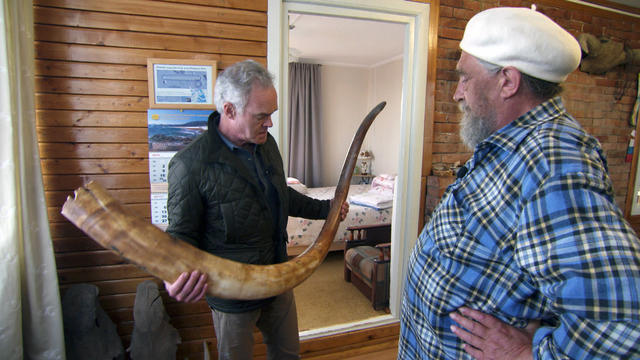Footprints laid down by Ice Age hunter-gatherers and recently discovered in a Utah desert are shedding new light on North America’s earliest human inhabitants.
Dozens of fossilized prints found in dried-up riverbeds in Utah reveal more details about how the continent’s original occupants lived more than 12,000 years ago — just as the frozen planet was starting to thaw.
The fossils could have remained unnoticed if not for a chance glance out of a moving car as researchers Daron Duke and Thomas Urban drove through Hill Air Force Base chatting about footprints.
“We were talking about, ‘What would they look like?'” Duke told AFP. “And he said, ‘Kind of like that out the window.'”
What the men had found turned out to be 88 distinct prints left by a mixture of adults and children on what is now the Utah Test and Training Range.
“They vary between just looking like discolored patches on the ground and… little pop-ups, little pieces of dirt around them or on them. But they look like footprints,” Duke said.
The discovery was followed by a painstaking few days of very careful digging — with Duke sometimes lying on his belly — to ensure that what they were looking at was as old as it appeared.
“What I found was bare feet of people… that had stepped in what looks to be shallow water where there was a mud sub-layer,” Duke explained. “The minute they pulled their foot out, the sand infilled that and has preserved it perfectly.”
Duke, of the Nevada-based Far Western Anthropological Research Group, had been in the area looking for evidence of prehistoric campfires built by the Shoshone, a people whose descendants still live in the western United States.
Duke said he refers to the area as a “lost oasis” because the bountiful marshland would have looked very different “from the barren playa it is today.”
“As we face challenges today with the loss of water in the Great Salt Lake and across the Desert West, the area serves as a nearby example from the past as to how abruptly things can change,” he said.
Duke had brought Urban over from Cornell University because of his expertise in uncovering evidence of ancient humans — including the discovery of human tracks in New Mexico’s White Sands National Park that are thought to be up to 23,000 years old.
The new fossils add to a wealth of other finds from the area — including stone tools, evidence of tobacco use, bird bones and campfire remains — that are starting to provide a more complete record of the Shoshone and their continuous presence in the region beginning 13,000 years ago.
“These are the resident Indigenous people of North America; this is where they lived, and this is where they still live today,” Urban said.
For him personally, finding the footprints has been a professional high point.
“Once I… realized I was digging a human footprint, I was seeing toes, I was seeing the thing in immaculate condition… I was just kind of awestruck by it,” he said.
“Nothing beats the sense of discovery and awe that maybe as an archaeologist, you are actually chasing your whole career.”
And sharing the discovery with the distant descendants of the people who made the prints was immensely rewarding, Urban said.
“You realize the same thing is happening — what the connection is to such a distant past and to something so human, I think it gets to everybody in one way or another eventually.”
Anya Kitterman, Hill Air Force Base’s cultural resource manager, is overseeing work that includes a 5,000-acre archaeological survey and a pilot study on the use of non-invasive archaeological techniques, including use of a magnetometer and ground penetrating radar, or GPR.
“We found so much more than we bargained for,” Kitterman, said.




































